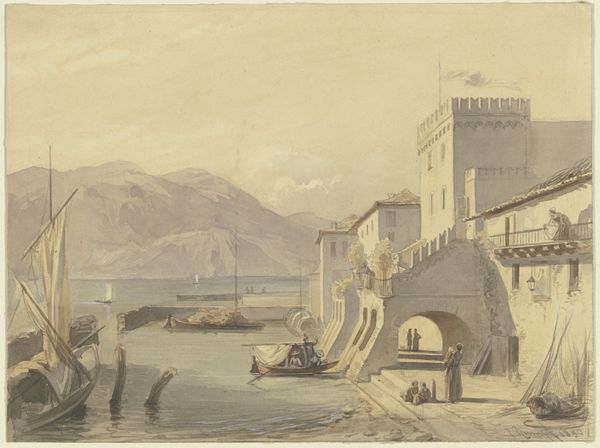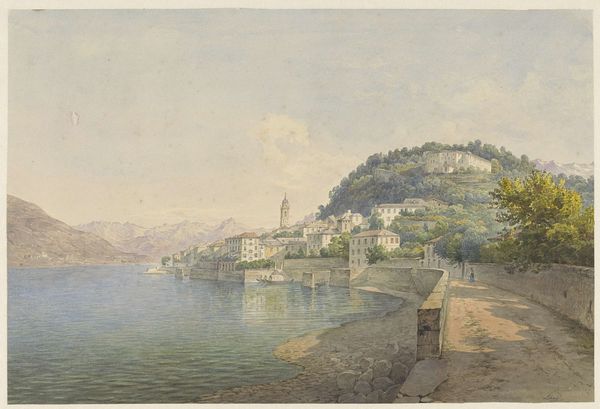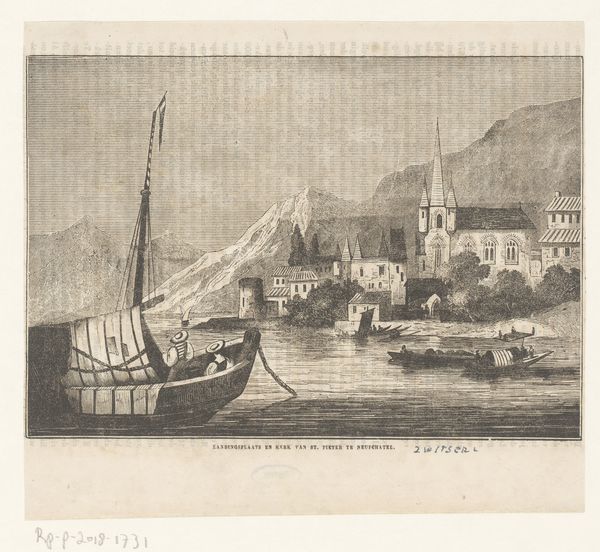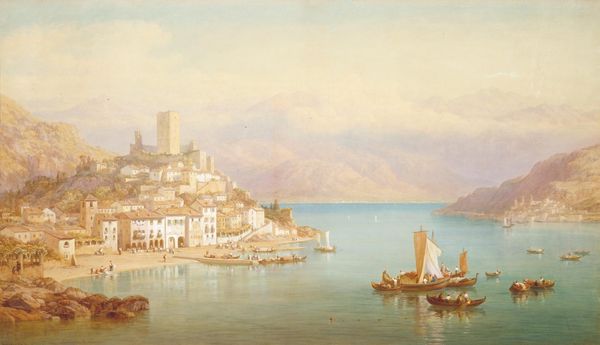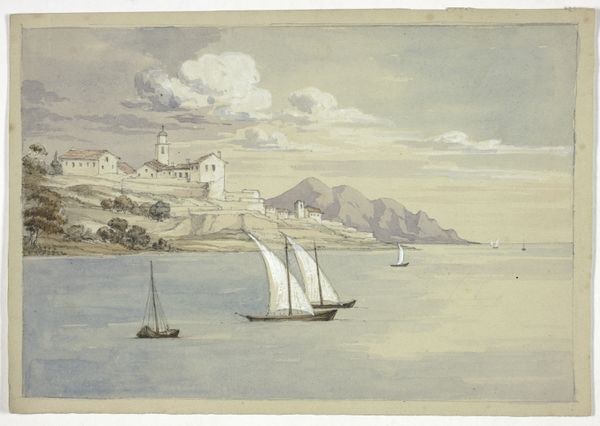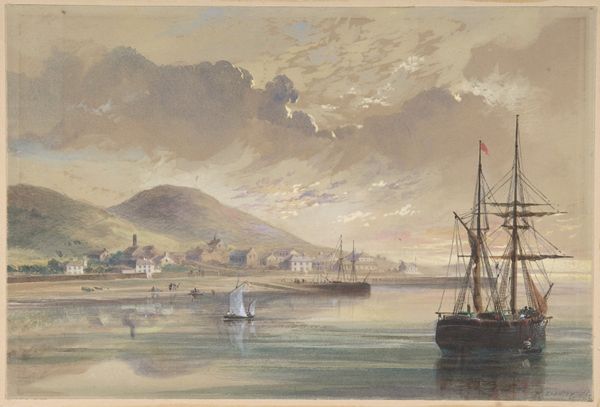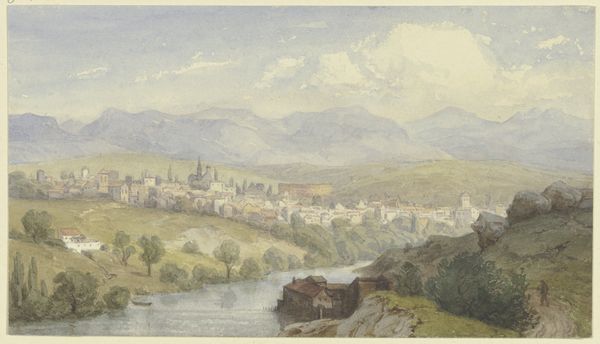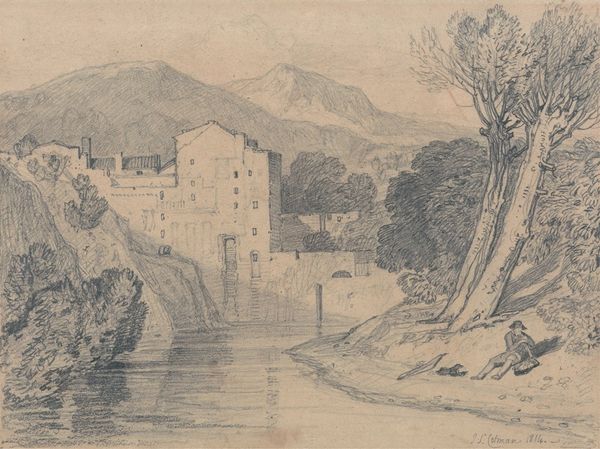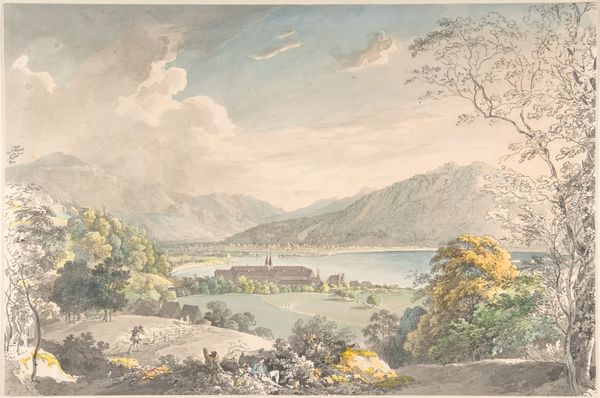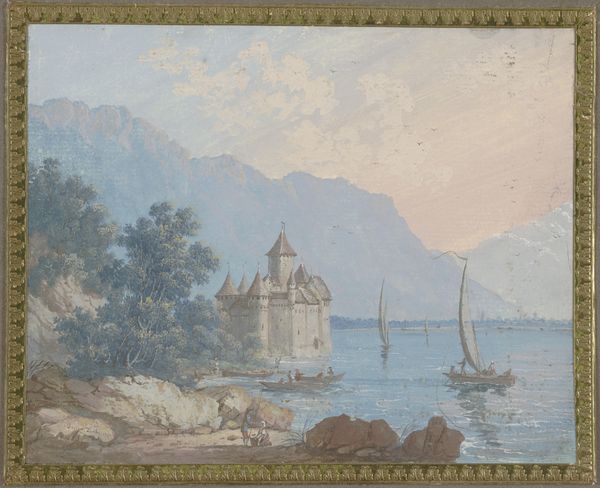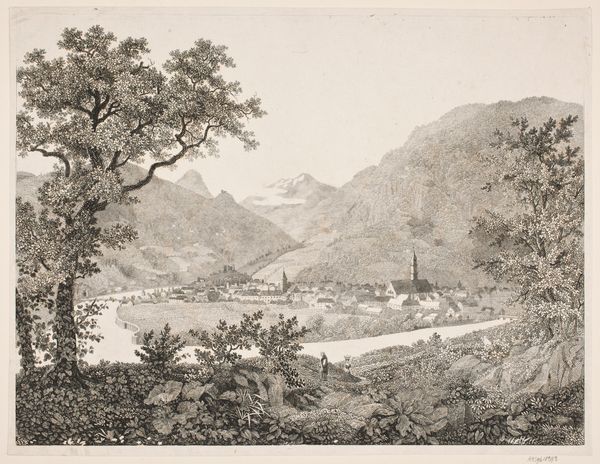
drawing, painting, print, gouache, plein-air, paper, watercolor, graphite
#
drawing
#
water colours
#
painting
# print
#
gouache
#
plein-air
#
landscape
#
paper
#
handmade artwork painting
#
watercolor
#
coloured pencil
#
romanticism
#
water
#
graphite
#
cityscape
#
realism
Dimensions: 187 mm × 270 mm
Copyright: Public Domain
Curator: This delicate watercolour, gouache, graphite and coloured pencil on paper is entitled 'Majolica, Lake Como'. It dates from 1841. Editor: It has such a subdued palette, doesn’t it? A sort of hazy tranquility. Curator: Murray captures the reflected light beautifully, the water almost merging with the sky. Note the layering of tones; it is technically superb. The artist uses both watercolor and gouache to achieve this layered effect. Editor: What I find compelling is the perspective she presents. By emphasizing the small figures in boats, Murray underscores humanity’s relationship with—and perhaps dependence on—the natural world. What do we know about who might be included in this "humanity?" Curator: The composition follows a traditional format: the foreground with human activity, the midground of the lake and structures, and then, as background, the dramatic, though muted, mountains. Editor: Those boats likely facilitated local commerce and travel. It would be interesting to research the gendered division of labor present on the lake at this time. Who operated these boats? Whose labor benefitted from it? Were there other people excluded? Curator: Interesting lines of inquiry. If you observe how the buildings nestle into the landscape, they mimic the shape and tone of the mountains behind them. Editor: True. The settlement doesn't impose. There’s harmony. The work presents the picturesque image of a time where local economies coexisted more directly with the natural world, albeit tinged with its erasures and inequalities. Curator: The subdued color palette also unifies all of the planes in the image, doesn’t it? Almost like a photograph left in the sun too long. Editor: And while we can appreciate its aesthetic beauty, it’s crucial to question who benefited from the seemingly harmonious scenes depicted here. Curator: Ultimately, it’s the visual interplay between light, color, and form that makes it a compelling and valuable object of study. Editor: Yes, but as an object of study, it raises compelling questions about the representation of landscape, labor, and social structures in art.
Comments
No comments
Be the first to comment and join the conversation on the ultimate creative platform.
